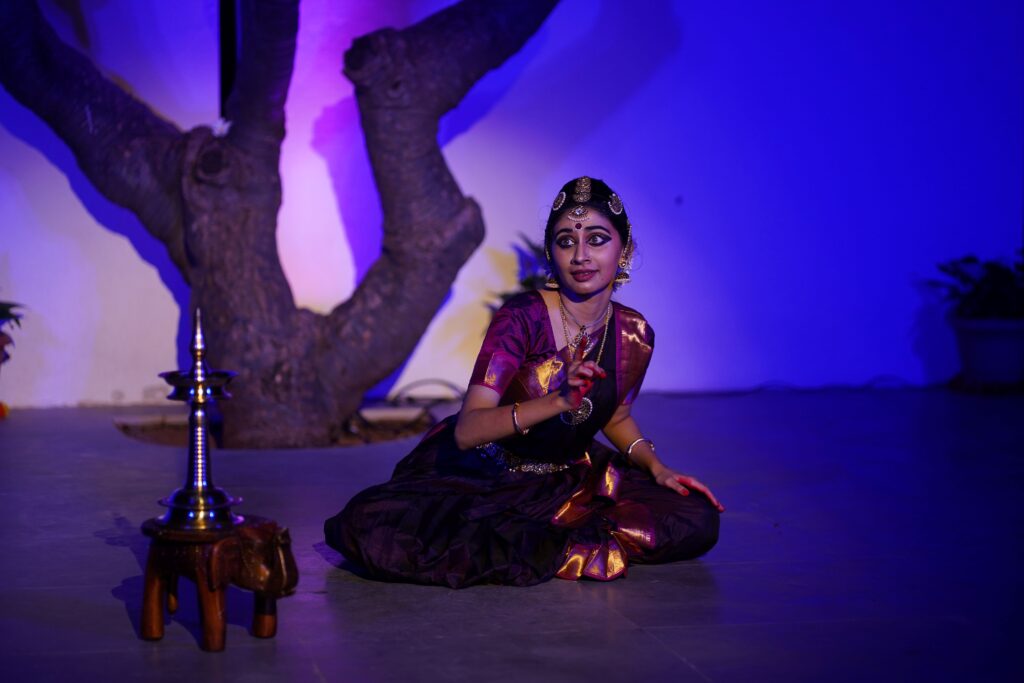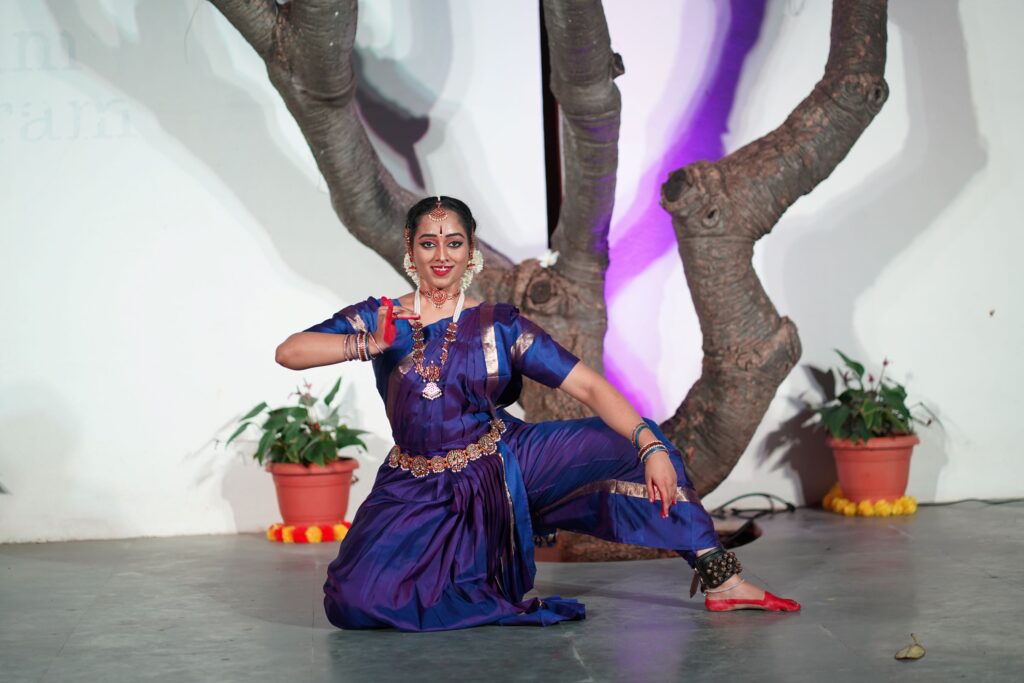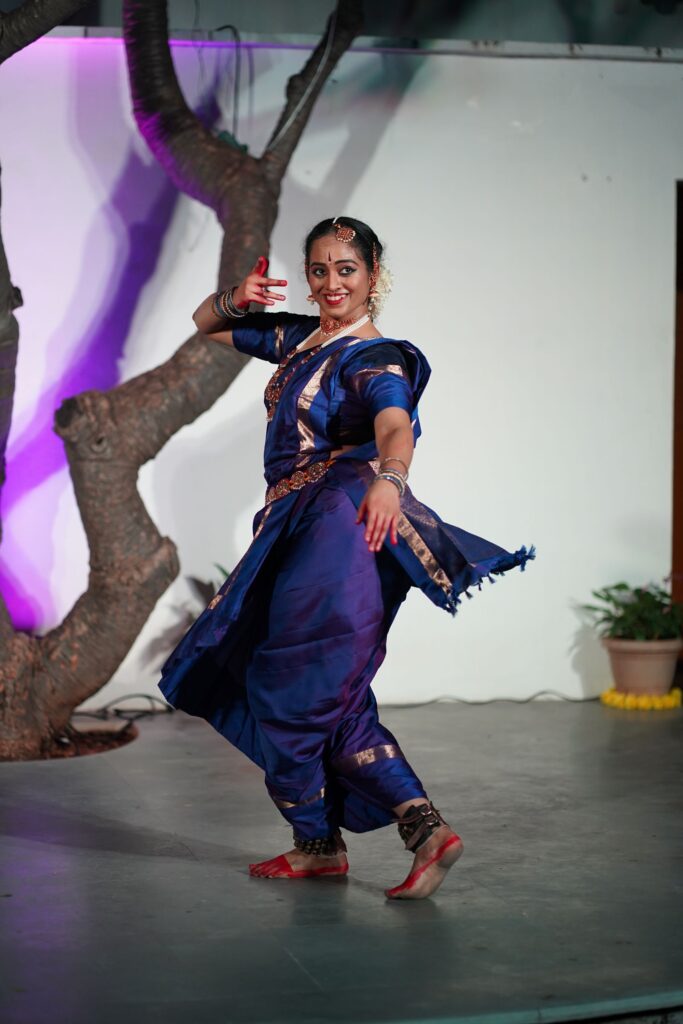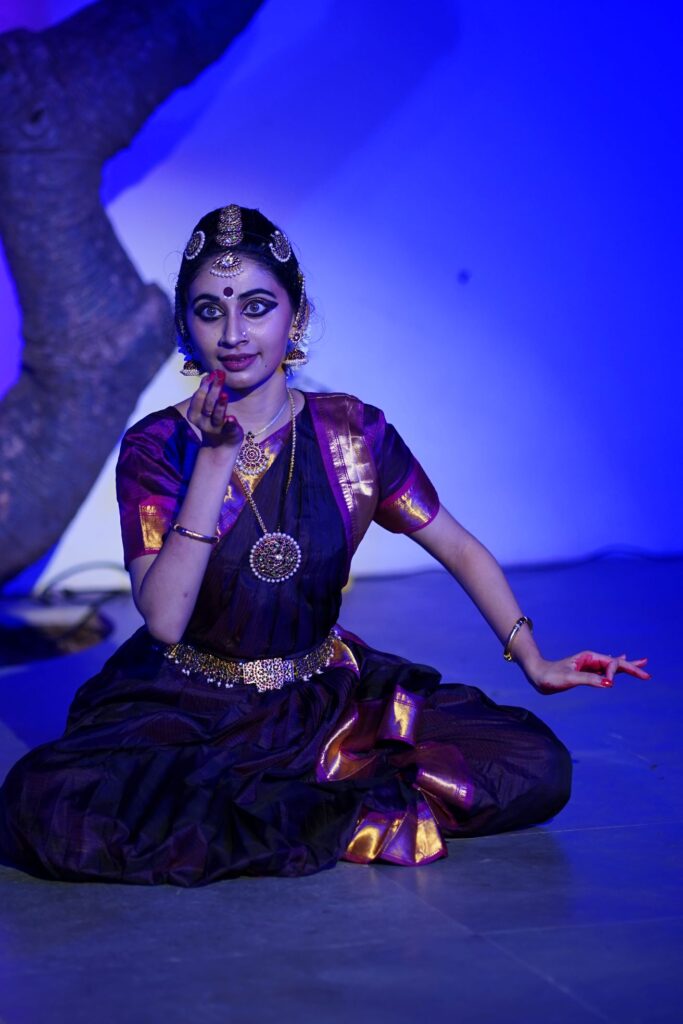Kuchipudi dancer Sravya Subramanyam and Bharatanatyam dancer Sahitya Ramkumar came together to present a sold-out ticketed show Double Bill at Saptaparni on the first Saturday of December, which was well-appreciated by the rasikas. The two dancers, who came together for the first time to be part of a joint programme, in their individual segments left the rasikas asking for: “Yeh Dil Mange More”.


The evening’s first segment began with Abhinaya Kuchipudi Kalakshetram Sravya Subramanyam’s Aarohana, with Adi Shankaracharya slokam, ‘Ganapatim Bhujangam’, followed by Sri Oothukkad Venkata Subbaiyyar’s composition ‘Ananda Nartana Ganapatim’, set to Aarabhi Ragam and Aadi Talam. In presenting this piece, Sravya did full justice to the beautiful nartana of Lord Ganesha with Gandharvas and Chaaranas

Sravya, next selected a composition of Yati Narayana Teerthulu set in Ragamalika and Adi Talam, for the Tarangam, on the beautiful Lord Krishna to showcase his mischievous childhood and fun with Gopikas. The Kuchipudi dancer exhibited the Sancharis beautifully even while dancing on the rim of the brass plate. Dancing on the brass plate shows the dancer’s confidence and ease of switching.
After Tarangam, it was Jaavali, where Guru Smt. Sreelatha Prasad’s disciple picked up a composition of Nallan Chakravartula Krishnamacharyulu’s, ‘Cheliyaro Nenemi Cheppudu Neetoda’, set to Neelambari Ragam in Adi Talam. This particular Jaavali about Parvati Devi gave the dancer lot of scope to express herself the agony and love about her man (Lord Shiva to her friends). Sravya ended her performance with Thillana, to a composition of DSV Sastry set in Surati Ragam and Adi Talam. In this particular Thillana, which brought together three forms of Lord Venkateswara – Lord Rama, Lord Krishna and Lord Srinivasa – the Kuchipudi dancer brought out the intricate footwork and karanas splendidly. All pieces presented by her were choreographed by her Guru Pavani Sreelatha Prasad, while Sravya added her touch in Thillana and the first three songs were sung by K Chandra Rao and finale by DSV Sastry.
Sahitya Ramkumar, trained under Gurus – Pasumarthy Ramalinga Sastry, Vithya Arasu (currently learning Karanas) and Dr. Anupama Kylash (Abhinaya) began her मम Mārgam recital with excerpts from the Adi Shankaracharya composition of ‘Rajarajeshwari Ashtakam’ set to Ragamalika, with dhyana shloka, the first shloka of ‘Lalitha Sahasranamam’. The Bharatanatyam dancer had picturesque postures of Parvati Devi with vivid Abhinaya.
Not taking the well-travelled path, Sahitya picked up a Malayalam lullaby, ‘Omana Thingal’, set in Ragamalika and Talamalika, which was specially written for baby King Swathi Thirunal. In this, Sahitya stunningly interpreted the expressions of the mother’s love and her dreams for her son.

The Bharatanatyam dancer picked legendary violin maestro Lalgudi Jayaraman’s composition set in Sindhubhairavi Raagam and Aadi Talam for her Thillana in praise of Lord Siva and Goddess Parvati’s son, Kartikeya. This piece helped Sahitya in showcasing the fast energised movements and sculpted poses radiantly.
The curtains came down with Abhang, ‘Bhakta Jana Vatsale’ set in Brindavana Saranga Ragam. All those who witnessed Sahitya perform this Abhang, would agree that Lord Panduranga Vitthala would have showered his blessings on the young dancer, as the rasikas not only tapped their foot, but also had tears in their eyes soaking in the performance of the Bharatanatyam dancer. Kudos to her for picking up compositions in four different languages – Sanskrit, Malayalam, Tamil and Marathi – and justifying it with breath-taking choreography.
Founder of Sahityakalpa, and a Graded Doordarshan artiste, Sahitya’s selected pieces included the Devi Kriti, produced by Lavanya Anant, Varnam, a Radha Kalpa production by Rukmini Vijayakumar, Thillana produced by Malathi Iyengar, Abhinaya produced by Thrissur Janardhan and the finale by OS Arun.
In Double Bill, the audiences witnessed the dancers perform one after another, the icing on the cake would be when they perform a Jugalbandi.
